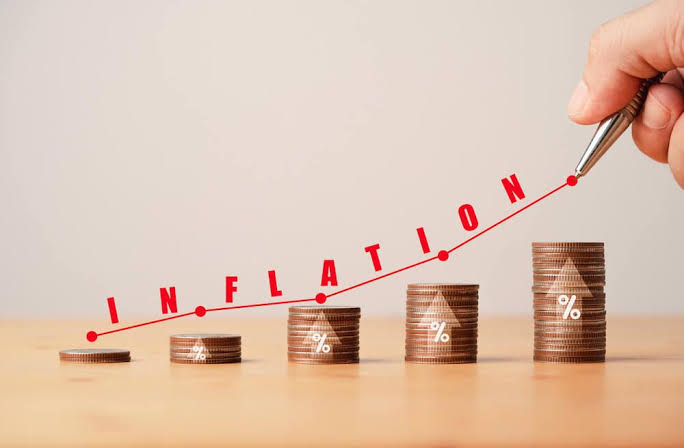Introduction
The Reserve Bank of India (RBI) uses the repo rate as a key monetary policy tool to regulate liquidity, control inflation, and ensure economic stability. Changes in the repo rate have a profound impact on various aspects of the Indian economy, influencing borrowing costs, investment decisions, consumer spending, and overall economic growth. This article explores the implications of repo rate changes on the economy and various sectors.
What is the Repo Rate?
The repo rate is the rate at which the RBI lends short-term funds to commercial banks. A change in the repo rate directly impacts the cost of borrowing for banks, which in turn affects lending rates for businesses and individuals.
- Increase in Repo Rate:
When the RBI increases the repo rate, borrowing becomes more expensive for banks. This is done to curb inflation by reducing liquidity in the market. - Decrease in Repo Rate:
A reduction in the repo rate lowers borrowing costs, making loans more affordable. This encourages spending and investment, boosting economic activity, especially during periods of economic slowdown.

Impact on the Indian Economy
- Inflation Control
- Higher Repo Rate: In an inflationary environment, the RBI may increase the repo rate to reduce money supply. This discourages borrowing and lowers consumer demand, helping to control inflation.
- Lower Repo Rate: During low inflation or deflationary periods, a lower repo rate increases money supply, stimulating demand and economic growth.
- Cost of Borrowing
Changes in the repo rate affect interest rates on loans and advances:- For Businesses: Higher repo rates lead to increased loan costs, potentially delaying expansion plans.
- For Individuals: Loans such as home loans, car loans, and personal loans become costlier or cheaper, affecting consumer spending.
- Investment and Economic Growth
- Decreasing Repo Rate: Encourages businesses to invest in capacity expansion due to cheaper borrowing costs.
- Increasing Repo Rate: Deters investment due to higher costs, which may slow down economic growth.
- Exchange Rates and Foreign Investment
- Higher Repo Rate: Attracts foreign investors due to better returns on deposits, strengthening the Indian rupee.
- Lower Repo Rate: May lead to capital outflows, depreciating the rupee and impacting trade balances.
- Stock Market Performance
The repo rate has a significant impact on equity markets:- Rate Cuts: Lower borrowing costs boost corporate profitability, leading to higher stock market valuations.
- Rate Hikes: May dampen investor sentiment, causing stock prices to fall.
Sectoral Impacts
- Banking and Financial Services
- Banks adjust their lending and deposit rates based on repo rate changes, directly impacting their net interest margins (NIMs).
- Higher rates may reduce credit growth, while lower rates can stimulate lending activity.
- Real Estate and Housing
- Lower repo rates make home loans cheaper, boosting demand for residential properties.
- Rate hikes increase EMIs (Equated Monthly Installments), potentially slowing down the real estate market.
- Automobile Sector
- Auto loans are sensitive to interest rate changes. Lower rates drive higher sales, while rate hikes may reduce demand.
- Infrastructure and Manufacturing
- These capital-intensive sectors are heavily influenced by borrowing costs. Lower repo rates encourage investment in infrastructure and manufacturing projects.
- Consumer Goods
- Lower rates boost disposable income and consumer spending, benefiting sectors like FMCG (Fast-Moving Consumer Goods) and retail.
Recent Repo Rate Trends and Their Implications
- In the wake of the COVID-19 pandemic, the RBI implemented aggressive repo rate cuts to support economic recovery.
- In 2023-2024, global inflationary pressures prompted the RBI to adopt a more cautious approach, focusing on balancing growth and inflation.
Challenges and Limitations
- Transmission of Rates
The effectiveness of repo rate changes depends on the extent to which banks pass on these changes to borrowers. Often, banks are slow in transmitting rate cuts but quick to increase lending rates, limiting the impact of monetary policy. - External Factors
Global factors such as oil prices, geopolitical tensions, and foreign interest rates can influence the effectiveness of repo rate adjustments. - Lag in Effects
The impact of repo rate changes is not immediate and may take months to influence economic activities, making it challenging for policymakers to address short-term shocks.
Conclusion
Changes in the repo rate by the RBI play a pivotal role in shaping India’s economic landscape. While rate hikes help in controlling inflation, rate cuts stimulate growth by making borrowing cheaper. The effectiveness of these measures depends on timely and efficient transmission by banks, as well as the alignment of monetary policy with broader economic goals. As India continues its journey towards becoming a $5 trillion economy, the repo rate will remain a key tool in managing growth and stability.

